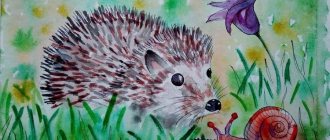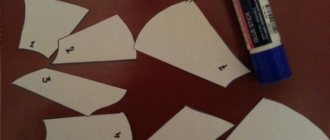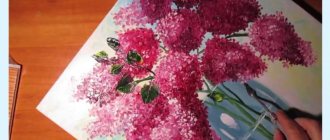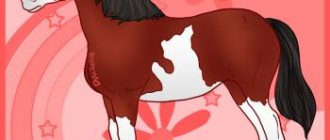Lesson Objectives
When working with children, it is important to complete the tasks below. They can be divided into several groups
Developmental and educational
The following software tasks must be completed:
Children are taught to draw human figures, paying attention to the proportionality of various parts of the human body. Before drawing, they are taught to create a model of body position using stick figures. They tell you how to use it. Children are taught fine arts, the ability to express themselves in a drawing. They try to interest kids in playing sports, to show that it is useful and interesting.. FEMP classes in the 2nd junior group according to Pomoraeva and Pozina
FEMP classes in the 2nd junior group according to Pomoraeva and Pozina
They also face the following speech correction tasks:
- Using the example of physical exercises and the names of various parts of the body, children's vocabulary is developed.
- They teach kids the correct use of suffixes for diminutive names.
- The teacher, controlling sound pronunciation, teaches how to pronounce words correctly.
Note! Additionally, the problem of developing children’s fine motor skills is solved.
The best exercises and drills to help you learn!
This is general information and should not be confused with advice. Talk to a specialist in all health-related matters and ask for their advice. Children must be supervised by adults at all times. We disclaim all liability for any physical damage caused by the information on this website. For more information, please see our disclaimer and privacy policy.
The handstand is one of the most important skills in gymnastics. The straight-body handstand position is not only one of the foundations of floor exercise, but of other skills as well. Position yourself in giant handstand on bars, in front Handspring on the vault and in handsprings (front and back) on both beam and floor. So, it is important to both learn and master the perfect handstand.
We're going to share with you some exercises you can do to strengthen the muscles needed for handstands, as well as some exercises you can do at home and at the gym to learn how to do a handstand.
Click here to download the GymnasticsHQ 10-Minute Handstand Workout
Muscles Required for Handstands
You need strong arms and shoulders and a strong core to master and master the perfect handstand.
- Arms and Shoulders : You need strong arms and shoulders to support your body in a handstand. You also use your shoulder muscles to maintain balance.
- Core : You need a strong core to hold your body in a tight position.
Exercises you can do at home
We have listed some exercises that you can do at home to strengthen the muscles needed for a perfect handstand.
- Planks : You can perform plank exercises to strengthen the core muscles needed for handstands. You can do the plank on your wrists or elbows. When you are in the plank position, you need to squeeze your legs, glutes, and core. Your shoulders should be higher than your elbows and your body should be in a straight line from head to toe. While squeezing all your muscles and maintaining a straight body position, do not forget to breathe! The plank is great for working several muscle groups, but especially the core.
- Push-ups : Push-ups will help you develop the arm strength needed to hold a handstand. Get into a plank position with your body straight and your shoulders resting on your wrists. Squeeze your torso and buttocks and bend your arms. You want to focus on your body position and go as deep as you can while maintaining control of your movement. Raise your body again with your arms straight to complete the rep.
- Pull-ups : Pull-ups help strengthen your upper body, arms, and shoulders. You can do both pull-ups and barbell pull-ups to increase arm strength. For pull-ups, you hold the bar with your fingers pointing away from your body and tuck your chin over the bar. When doing a pull-up, you hold the bar with your fingers toward your body.
This is a great skill development video for learning handstands.
Handstand exercises you can do at home
You can see many of the exercises mentioned in the video above. These are exercises and parts of the handstand that you can practice at home.
Lunge : You can practice the initial lunge for handstand. Start standing with your feet together and your arms at your sides. Then, to begin the lunge, raise your arms straight above your head near your ears, place your lead leg in front of you, and bend it slightly. The back leg should be straight. Hold this position for 3 seconds (you want to squeeze your core) and then bring your legs together with your arms at your sides.
Lunge and Lever : The lunge part of the lunge and the lever are the same, but then you want your body to be in a "T" shape. To do this, with your arms extended above your head next to your ears, lift your back leg up while lowering your torso and arms. You want your body to remain straight. You want to stop with your back leg directly behind you, perpendicular to the leg you're standing on, while your torso is also perpendicular to the leg you're standing on. You want to be in a "T" shape with your body. After you press “T,” slowly return to the lunge, keeping your arms and torso in a straight line with your back leg.
Wall Spiderman: Wall Spiderman is a way to do a handstand against a wall, using the wall to both support and keep you upright.
To do this, stand near a wall that is not near anything (furniture or other objects) that you can hit. You can also do this using a wedge against the wall or using a homework mat for a handstand. Stand with your back to the wall. Place your hands on the ground and one foot on wa .
Kinds
There are several types of charging. Its variety helps to change the type of activity to another and give the child a break if he is tired of one or another exercise or is still finding it difficult.
Fun exercise for children
This activity takes the form of a game and is ideal for children from two to three years old. This age is ideal to start introducing them to sports. At this time, children are extremely restless, so why not channel their energy in the right direction? Moreover, everyone loves games, and they help develop ingenuity and an analytical mind.
Warm-up exercises
This type of sports activity does not mean a full-fledged workout, but a short warm-up, which perfectly helps to cheer up, recover from sleep and tune in for the coming day.
Power charging
Yes, no matter how paradoxical it may sound, children also need to be given a certain load in order to develop their muscles and endurance. The main purpose of this type of exercise is to use certain muscle groups during exercise.
In the case of children, strength exercises include running, lifting toys, jumping, and so on.
How to draw a head from any angle
Assignment: Draw Loomis's head
Take a few pictures of yourself or someone else and then use them to build a head using the Loomis method. Focus on the correct up and down tilt. Be sure to take the careful measurements I mentioned in this video and keep the lines clean. Remember that each person has individual proportions that will differ from the average loom head. At this point, simply draw the average proportions. Once you get comfortable with this, you can try to capture the distinctive features of the person you are drawing.
If you're having trouble drawing a circle or oval for your head, spend a little time at the beginning of each day warming up your hand with a lot of circles and ovals.
Post your drawings to the Portrait Facebook group for feedback
Visit the Premium Portrait course to support lessons and access all portrait videos.
Drawing the head
In this first tutorial I'm going to try to summarize and simplify Andrew Loomis' approach to drawing a head . Like this.
If we take the head and remove the eyes, nose, lips and ears, we are left with 2 simple structures. A ball for the skull and a square shape for the jaw.
The skull is spherical in shape, but with flattened sides. Thus, cutting off a slice from both sides gives us a very close idea of the cranial mass.
When drawing the head, I'll start with a ball and draw an oval to represent the flat side plane. Size is important here. Make sure the ball is a perfect circle . Don't be careless. The oval is a little more difficult. The height will always be the same no matter what angle you draw the head from. This is ⅔ the height of the circle. From the center and top of the circle, divide this area into three parts and you will get the top of the oval. Do the same below.
Finding left and right turns: The width of the oval will depend on the direction in which the person is looking. Compare the size of the front plane with the size of the side plane. The upper part of the oval falls on the corner of the forehead, where the anterior plane meets the lateral plane. This area is usually rounded, so it is open to the artist's interpretation. I have found that it is usually located near the end of the eyebrow. The line on the front plane represents the eyebrow, so pay attention to the angle from one eyebrow to the other.
Definition of up and down slope: Vertical slope is indicated by the angle along the lateral plane. If the head is tilted up, the angle will be upward, and if the head is tilted down, the angle will be downward. The degree of slope determines how steep the line will be. I like to use the angle from ear to eyebrow.
Then, at the base of the vertical line, draw a curve identical to the line of the brow ridge. This represents the bottom of the nose. Drawing the same line from the top of the oval again will take you to the hairline.
The face can be divided into almost perfect thirds: chin, nose, forehead and hair.
We can use the measurements we've already found to determine where the chin should be.
Observe the overall shape of the jaw and draw the main angles, starting from the eyebrow and ending with the side plane of the head. This is usually about halfway up the oval or a little further back.
Now that we have the foundation of the head, we can finish it off by adding all the features! Don't worry, next time I will explain this step in more detail. Each function deserves its own lesson.
Let's go through this again.
- Start with a circle for the skull
- Oval for the side of the head
- Angle to show a person looking up or down. I'll go with a slight downward slope.
- Draw an identical curve to find the nose
- Double this distance to find the chin
- Attach the sponge
Now you have a 3D representation of the head, ready to show details. This approach is really good for determining the perspective of the head. A good exercise is to try to imagine the head as a simple elongated box.
The angles on the front plane of the face, such as the hairline, eyebrow line, nostrils, lips and chin, will be the same as the angles on the front plane of the frame. The angle from the eyebrow line to the ear is the same as the angle on the side plane of the box.
These angles are really important because they define the head as a three-dimensional shape in space.
This may seem overly technical with so many details to remember, but with practice it actually becomes very easy, so get out the sketchbook and practice hundreds of times from different angles! You will find that you get better much faster than you think.
Drawing the Head and Hands - Andrew Loomis
This video sums up this book. The full version is a great resource.
Like what you learned? Check out the next tutorial on How to Draw a Head from the Side!
Filed in: Basics • Portrait/Head • Video









